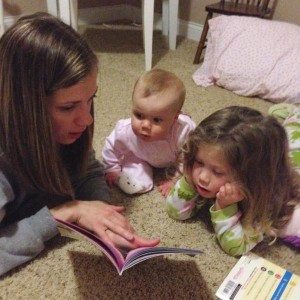Project Description

 Support your child when he or she gets stumped on a tricky word. Should you tell them the word? Really, what does “sound it out” mean anyway? Learn how to scaffold your child as he or she problem solves through a text.
Support your child when he or she gets stumped on a tricky word. Should you tell them the word? Really, what does “sound it out” mean anyway? Learn how to scaffold your child as he or she problem solves through a text.

Here are some strategies that you may find useful:
There are 3 main questions that readers keep in mind as they are solving words.
- Does it look right?
- Does it sound right?
- Does it make sense?
These are all things we naturally think about and may seem automatic to most of us. But, as children are learning to read, they may need some extra support when it comes to solving tricky words. Our ultimate goal is to provide children with supports that they can transfer to their independent reading. Therefore, prompts such as, “You know that word, we ate it for lunch” are not helpful. Prompts, or questions that they can use at a later time to solve any word are what will help your child to self-monitor their own reading.
What do I say to my child when he/she gets stuck on a word?
![]() Think about if the word is one that he/she can figure out with the skills they have. If it is not, then just tell them (for example telling them names of characters/places is okay)
Think about if the word is one that he/she can figure out with the skills they have. If it is not, then just tell them (for example telling them names of characters/places is okay)
If it is a word they can figure out then prompt your child by using one or more of the following…
- Put your finger under the first letter/first part (depending on the age of the child) and get your mouth ready to make the sound.
- Look at the picture, if there is one and think about what is happening in the story.
- Think about what is happening. What would make sense?
- Look at the first part of the word. The first part is the first 2 or 3 letters of a word. Cover up the end part of the word with your finger and just look at the first 2 or 3 letters. Make the sound of the first part and think about a word that starts like that and would make sense.
- Look across the whole word all the way to the end. Make sure the letters in the word match the sounds that you are saying. Look for parts in the word you may know.
- If you’ve tried a couple of strategies and your child has not been able to solve the word, tell them the word and continue enjoying the story!
View the Context Clues Resource
Here’s a printable bookmark to remind you and your child of reading strategies for solving tricky words!



Comments are closed.